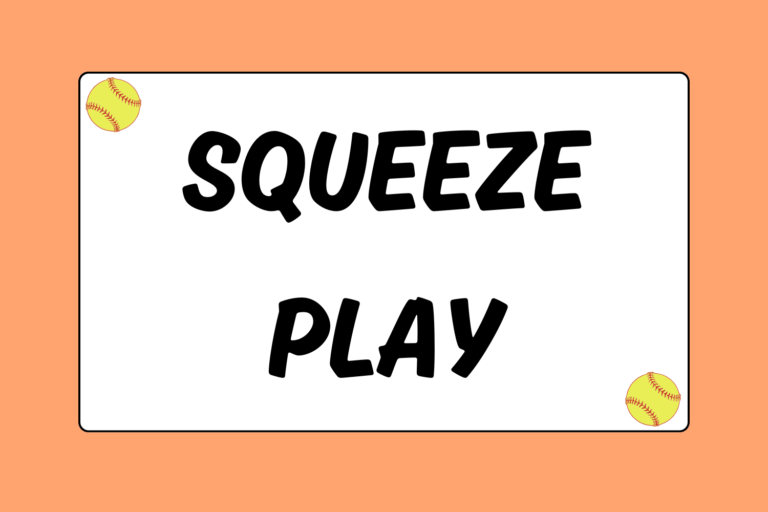Every coach needs to know how to give batting signals. The delivery, variety, and indicator determine whether your signs will be successful or easily picked off. There is a systematic approach that must be taken when creating and relaying these signals. They must be easy enough that a batter (in the heat of the moment) can clearly understand and read them, but complex enough that the other team cannot figure them out. Coaches can utilize the counting system, the touch system (also known simply as “indicators”), or a combination of both. This guide will reveal the process and strategies of all three and give you the tools you’ll need to come up with a system of your own!
Indicators
Every coach uses an indicator. An indicator is the signal that tells the batter “the signal is on.” After the indicator is touched, the next touch(es) determine what hitting signal is called. In other words, the indicator is simply used to weed out the “fluff” (useless, extra touches) from the actual signals.
When giving signs, it’s crucial that your batters stay in the box until you are completely through giving the signal (fluff included) — they can’t look away after you touch the indicator. In order to protect the integrity of your signals, you and your batters have to disguise them. If the batter sees the signal and steps immediately into the box — while you are still giving extra signals — she’s making it easy for the other team.
Examples of Indicators
You can use practically anything for an indicator — your belt, the top of your hat, the tip of your nose, or even a tap on the right shoulder. The key is flow, meaning you shouldn’t hover around the indicator and pause before continuing on to more touches. Doing so tells the other team that where you are pausing is of importance, and it will give them a head start in figuring out your signals.
Hot Tip: The Secret Weapon
An uncommon indicator is not where you touch, but simply the fact that you do touch — skin to skin, for example. That is, any skin-to-skin touch acts as the indicator. Let it be the clap of your hands, a hand to the face, or a touch to the top of your other hand. This type of indicator is incredibly unique because it perfectly disguises your signs and no two sequences have to be alike (a nightmare for your opponents)!
The Counting System
One of the most common systems used for hitting signals is the counting system. Simply put, every type of play is assigned a number, which refers to the number of touches the coach makes after the indicator. Below is an example of what numbers could be assigned to each type of offensive play:
- One touch indicates a bunt.
- Two touches indicate a hit-away.
- Three touchesindicate that the batter should fake bunt, and then hit.
- Four touches indicate a slap.
- Five touches indicate a bunt-and-run.
- Six touches indicate a steal.
- Seven touches indicate a suicide squeeze.
Again, the examples listed above simply show what the counting system might look like. As a coach, you can assign any number to your offensive plays; just remember to build up to it. That is, on a one-touch signal, don’t just touch the indicator and make one more touch (two touches total). Make sure you utilize fluff signs!
The Touch System
Similar to the counting system, the touch system assigns a certain indicator to an offensive play. For example, the belt could indicate a bunt (easy to remember because both start with “B”). Sliding your hand down the side of your right thigh could indicate a steal, while a slide down your left thigh could indicate a slap. The choice is completely up to you concerning what touch indicates what sign.
It is incredibly important that your batters are completely aware of the indicator, because they need to know when to start counting your touches. For instance, your indicator could be the bill of your hat. You would stand on either the first or third base line and make some “fluff” touches until you touch the indicator. Then, the immediate next signal would tell the batter what to do. Continue with a few more touches (fluff), and then let the batter return to the box.
A Combination
If you really want to confuse the other team, try a combination of both. For example, use the touch system with a count. That is, you could have a skin-to-skin touch as your indicator, but also assign the signal after three touches. Your batter would watch for the skin-to-skin touch and then count the next three touches. Then, the fourth touch would be the sign. With these types of signals, anything goes!
Batter Ready?
After every pitch, your batters should be stepping out of the box to look at you. Even if the same signal is on and you don’t need to repeat it, give the batter a few claps of encouragement and send her back into the box inspired. The most important thing is that your signals are smooth and clear — you don’t want the other team picking them off (especially for bunts and steals), and you don’t want your batter to be unsure of what to do in a crucial situation. Just make sure to practice the signals with your team beforehand!





